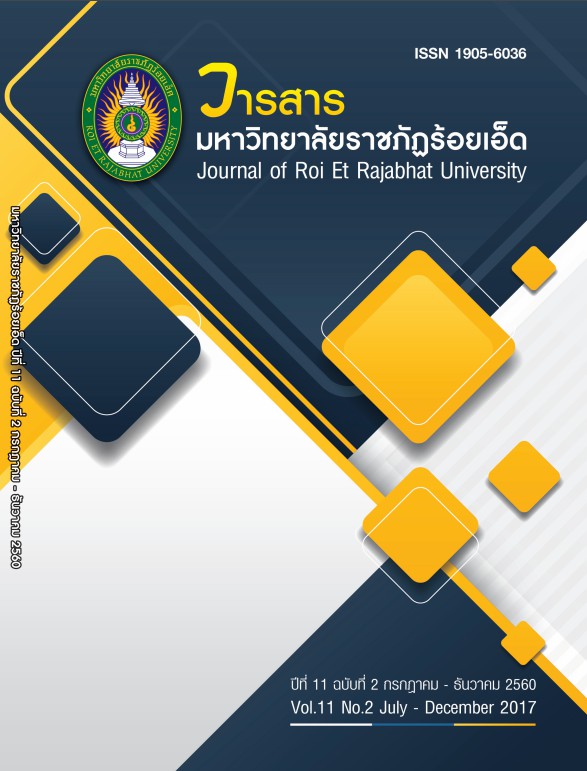The Buddha in Isan People’s Viewpoints
Keywords:
Buddha, Isan People’s ViewpointsAbstract
In this study, the author has studied the viewpoints of Isan people (North Eastern, Thailand)
on the Buddha by analyzing Isan literatures found in this area. According to the study, it has been found
that the Buddha in Isan people’s beliefs is different from the Buddha scriptures. Isan people believe that
the Buddha is the one close to them, spends time, lives his life, and interacts with the villagers. The author
also studies the way the world is thinking about the Buddha, the interaction between the Buddha and
traditional beliefs, and the symbolic behavior of the Buddha in order to understand the way people
think about the Buddha. In Isan point of views, Isan people had a strong belief in ghosts before Buddhism
existed. When Buddhism introduced to the villagers, there is a mix of traditional beliefs with Buddhism.
So the Buddha interacts with the traditional beliefs perfectly. From studying the symbolic behavior of
the Buddha in the North East, it is found that the Buddha character has many symbolic behaviors;
miracles, the footprints, and the symbol of exuberant. The symbolic behaviors of the Buddha in Isan
literature reveal the villagers’ viewpoints in Buddhism. The belief of the Buddha forms Isan social norms
and values which is more powerful than the original belief, the belief in ghosts. The combination of those
two beliefs produces many interesting stories found in Isan area.
References
จังหวัดสกลนคร. (2557). กรุงเทพฯ: ไซเบอร์พริ้นท์ จำกัด.
บำเพ็ญ ณ อุบล. (2542). มเหสักข์, ผี: พิธีกรรม. สารนุกรมวัฒนธรรมไทย ภาคอีสาน 11.
บัวริน วังคีรี. (2551). วรรณกรรมพื้นบ้านในชุมชนลาวหลวงพระบางกับบทบาทการสืบสานความเป็นลาวหลวงพระบาง
ในบริบทสังคมไทย. วิทยานิพนธ์ อ.ด. (วรรณคดีและวรรณคดีเปรียบเทียบ). กรุงเทพฯ: จุฬาลงกรณ์มหาวิทยาลัย.
ประคอง นิมมานเหมินท์. (2554). ไขคำแก้วคำแพง นินิจวรรณกรรมไทย-ไท. กรุงเทพฯ: จุฬาลงกรณ์มหาวิทยาลัย.
ปฐม หงษ์สุวรรณ. (2556). นานมาแล้ว มีเรื่องเล่า นิทาน ตำนาน ชีวิต. กรุงเทพฯ: สำนักพิมพ์แห่งจุฬาลงกรณ์ มหาวิทยาลัย.
ปุณณฑรีย์ เจียวิริยบุญญา. (2556). การนิยามหมายใหม่ของความเชื่อเรื่องนาค : ศึกษากระบวนทัศน์ท้องถิ่นเชิงเปรียบเทียบ
ของกลุ่มชาติพันธุ์ลาว-อีสาน จังหวัดนครพนมและแขวงคำม่วน (สปป.ลาว). วารสารวิถีสังคมมนุษย์.
พระไตรปิฎกแปลไทย ฉบับหลวง เล่มที่ 33. (2542). พระสุตันตปิฎก เล่มที่ 25 อปทาน พุทธวงศ์ จริยาปิฎก. กรุงเทพฯ:
มหาวิทยาลัยมหาจุฬาลงกรณ์มหาวิทยาลัย.
พระธรรมราชานุวัตร (แก้ว อุทุมมาลา). (2551). อุรังคนิทาน ตานานพระธาตุพนม (พิสดาร). กรุงเทพฯ:
โรงพิมพ์จูน พันลิชชิ่ง.
พิเชฐ สายพันธ์. (2539). “นาคาคติ” อีสานลุ่มน้าโขง ชีวิตทางวัฒนธรรมจากพิธีกรรมร่วมสมัย. วิทยานิพนธ์ สม.ม.
(มานุษยวิทยา). กรุงเทพฯ: มหาวิทยาลัยธรรมศาสตร์.
ภานุพงษ์ อุดมศิลป์. (2554). ลัทธิพิธีการนับถือเจ้าแม่สองนางกับชุมชนชายฝั่งลุ่มน้าโขง. วิทยานิพนธ์ อ.ด. (ภาษาไทย).
กรุงเทพฯ: จุฬาลงกรณ์มหาวิทยาลัย.
ศรีศักร วัลลิโภดม. (2533). แอ่งอารยธรรมอีสาน ศิลปวัฒนธรรมฉบับพิเศษ. กรุงเทพฯ: สานักพิมพ์มติชน.
สารานุกรมวัฒนธรรมไทย ภาคอีสาน เล่ม 8. (2542). มูลนิธิสารานุกรมไทย ธนาคารไทยพาณิชย์ กรุงเทพมหานคร.
อนันต์ เหล่าเลิศวรกุล. (2546). ปฐมสมโพธิกถาภาษาไทยฉบับสมเด็จพระมหาสมณเจ้า กรมพระปรมานุชิตชิโนรส :
ความสัมพันธ์ด้านสารัถถะกับวรรณกรรมพุทธประวัติอื่น. วิทยานิพนธ์ปริญญาอักษรศาสตรดุษฎีบัณฑิต สาขาวิชา
ภาษาไทย จุฬาลงกรณ์มหาวิทยาลัย.
อุดร จันทวัน. (2553). นิทานอุรังคธาตุ (ฉบับลาว). กรุงเทพฯ: โรงพิมพ์คลังนานาวิทยา.
Downloads
Published
How to Cite
Issue
Section
License
บทความที่ได้รับการตีพิมพ์เป็นลิขสิทธิ์ของวารสารมหาวิทยาลัยราชภัฎร้อยเอ็ด
ข้อความที่ปรากฏในบทความแต่ละเรื่องในวารสารวิชาการเล่มนี้เป็นความคิดเห็นส่วนตัวของผู้เขียนแต่ละท่านไม่เกี่ยวข้องกับมหาวิทยาลัยราชภัฎร้อยเอ็ด และคณาจารย์ท่านอื่นๆในมหาวิทยาลัยฯ แต่อย่างใด ความรับผิดชอบองค์ประกอบทั้งหมดของบทความแต่ละเรื่องเป็นของผู้เขียนแต่ละท่าน หากมีความผิดพลาดใดๆ ผู้เขียนแต่ละท่านจะรับผิดชอบบทความของตนเองแต่ผู้เดียว





